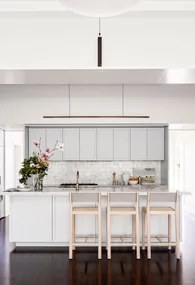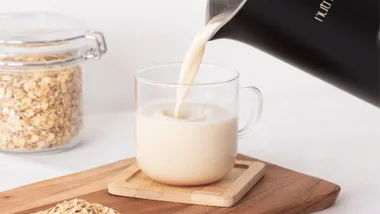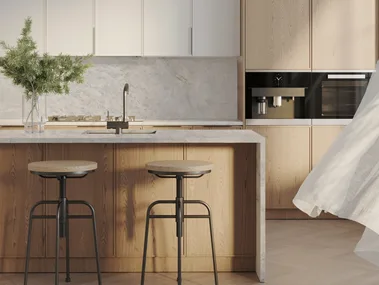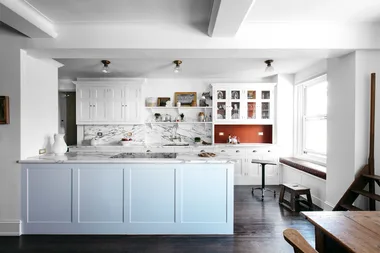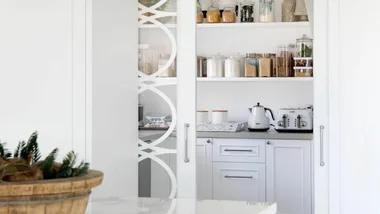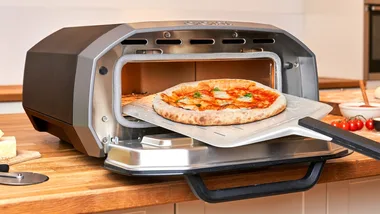A timber benchtop introduces a textured, organic surface to your kitchen, giving it added warmth and appeal. Solid timber, such as Victorian ash or Tasmanian oak, brings an extra level of luxury to a space. And because it’s in the hub of your home, your kitchen benchtop can set the tone for the rest of your interiors.
It’s a classic: timber has proven time and again to be a versatile choice for practically every decorating style. “Timber benchtops pair well with light cabinetry for a Scandi look, work perfectly to create a country aesthetic, and will also complement darker shades such as grey, black or navy to create a striking and modern contrast,” says Luke Cerra, Head of Product at Kaboodle Kitchens, which is stocked in Bunnings.
A sustainable resource, you can also use recycled timber for your benchtops; for example, pieces of Jarrah lovingly reclaimed from a farm. Timber benchtops are a great way to reference the Australian landscape in your kitchen decorating scheme.
It’s important to consider your practical needs in the kitchen and take style cues from your own taste, as well as the timber itself. “Every worktop is unique, with varying grain pattern and natural colour shifts that are part of the charm of the wood,” says Daniel Hood, a business area specialist at IKEA Kitchens. “Birch or ash worktop finishes are a great choice to complement the modern Scandinavian kitchen and bring warmth to an often white or neutral palette.”
While they’re generally easy to cut, join and install, many renovators are apprehensive about the care and durability of timber benchtops. How does it compare to other benchtop options, such as natural or engineered stone, laminate and concrete? We weigh up the differences.

How do you care for and maintain timber benchtops?
“A timber benchtop needs to be sealed when installed, and recoated when the coating starts to wear off,” advises Luke. “Timber benchtops are more vulnerable to scratches, chipping and staining so it’s important to be attentive when it comes to maintaining and using the surface.”
There’s also the option to sand and reseal kitchen benchtops down the track. “To ensure that your worktop ages gracefully, treat it regularly with wood treatment oil,” suggests Daniel. “It gives the surface a beautiful sheen, protects the wood and prolongs the life of the worktop.” Once your timber benchtop’s in use, always ensure spills are wiped up straight away, says Daniel.
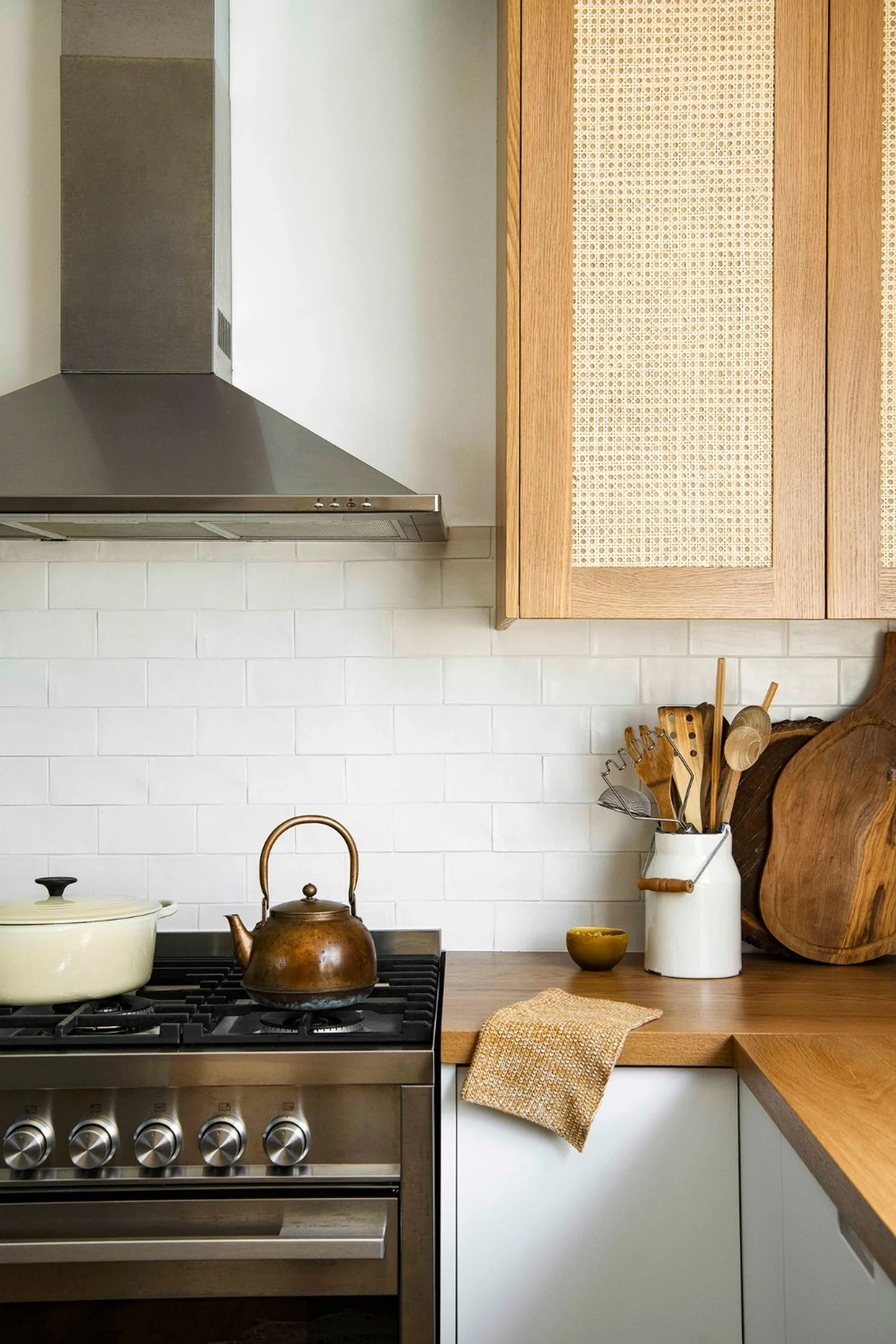
How do you prevent marking or staining a timber benchtop?
“Timber benchtops are softer than other benchtop materials, making them more vulnerable to scratches, chipping and staining. So it’s important to be aware of maintaining the surface to ensure longevity,” says Luke. “To prevent water damage, wipe up any sitting water after use.”
“Also refrain from placing anything too hot directly onto the timber surface,” he warns. “Ensure that the timber remains sealed and that the coating hasn’t worn away, to maintain durability.”
“Keep your worktop looking as good as new by using a chopping board and a heat mat (trivet) to protect the surface from heat and cut marks,” Daniel suggests.

What types of wood are used to make timber benchtops?
Depending on the look you’re after, there are countless natural timbers to choose from. Bunnings alone (including the Kaboodle range) offers almost 50 different styles, with bamboo and timber variations in wood, depth, size and finishes.
Hardwoods such as walnut, oak and beech are popular as they’re strong and durable. Jarrah also has a high resistance to weather, rot and termites so can be used outdoors, too.

“Oak is an exceedingly strong and durable hardwood with a prominent grain,” says Daniel. “It darkens beautifully with age acquiring a golden-brown undertone.”
Made with a focus on sustainability, IKEA timber worktops are finished with a 3-millimetre layer of solid wood, which covers a particleboard core, making the benchtop feel and look the same as solid wood. “With this technique, we can create new unique expressions and use less wood, which reduces the impact on the environment,” says Daniel.
